How to set up a Bosch dishwasher
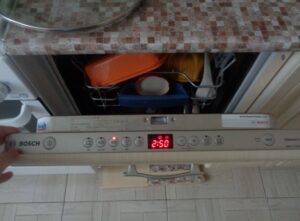 Comprehensive setup of a Bosch dishwasher is a whole series of activities that are difficult to handle on your own after purchasing the equipment. Under no circumstances should you skip a single item from the list of settings, because proper preparation of the “home assistant” for use is the guarantee that the machine will serve you for a long time. We will analyze in detail each procedure that needs to be performed immediately after purchasing a new automatic dishwashing machine.
Comprehensive setup of a Bosch dishwasher is a whole series of activities that are difficult to handle on your own after purchasing the equipment. Under no circumstances should you skip a single item from the list of settings, because proper preparation of the “home assistant” for use is the guarantee that the machine will serve you for a long time. We will analyze in detail each procedure that needs to be performed immediately after purchasing a new automatic dishwashing machine.
Don’t forget about the “idle” launch of the PMM
The first step is to carry out a test run cycle to ensure that the equipment is working properly. The manufacturer himself advises making the first start empty, without loading dirty dishes into the washing chamber. Such a procedure may seem like a waste of machine resources, electricity and water, but such a cycle will allow you to:
- make sure that the PMM is installed correctly - that it does not leak, takes in and drains water without problems;
- clean the device from dust, dirt and factory grease that may have remained either during assembly at the factory or during storage of the goods in the store warehouse.
A test run without dishes will not take up extra time and effort if you need to urgently fix the problem, which means you won’t have to unload the dishes from the machine.
An idle start should definitely not be skipped due to dubious resource savings, because this work cycle gives the user more than it takes away. Despite the fact that washing is done without dishes, household chemicals are still needed in the washing chamber, because it is the detergent that will wash away the dirt from the internal components of the dishwasher. Also, special salt must be added to the PMM before the working cycle.
Regenerating salt is sold in any supermarket, so finding it will not be a problem. In some cases, salt granules may be included with the dishwasher, then it will be included in the packaging of the starter kit for the initial setup of the Bosch dishwasher. How to add salt to the machine?
- Open the appliance door.
- Remove the lower dish basket.
- Locate the salt reservoir cap at the bottom and unscrew it.
- Add about a liter of water to the container.
- Pour about a kilogram of special salt granules for PMM into the compartment.
- Close the compartment tightly.
- Wipe up any salt water that may have escaped from the salt bin.
In the future, you will not need to think about the liquid in the salt bin, because water is poured into it only once. The only thing worth remembering is to refill the salt granules when the product runs out. Modern technology itself, using a special indicator, will indicate that it is time to add salt.
Under no circumstances use ordinary table salt for expensive equipment, because it is unable to deal with hard water as effectively as specialized salt granules for PMM do.
It is most convenient to load the product into the hopper using a special funnel, which is often included with a Bosch dishwasher. If you don’t have such a plastic device, then an ordinary cup will do just fine. Basically, the salt compartment in machines is designed for 1-1.5 kilograms of salt, that is, the average whole pack. After adding salt granules, all that remains is to open the water supply tap, connect the machine to the power supply and begin the test wash.
Is the tap water hard?
On average, special salt is consumed in a dishwasher within several months, but consumption is directly affected by the quality of tap water, as well as how to set up the dishwasher. This is due to the fact that in different settlements the water has different hardness, which you need to know to correctly set the PMM. Usually, the “home assistant” comes with special test strips that will help determine the hardness of the liquid.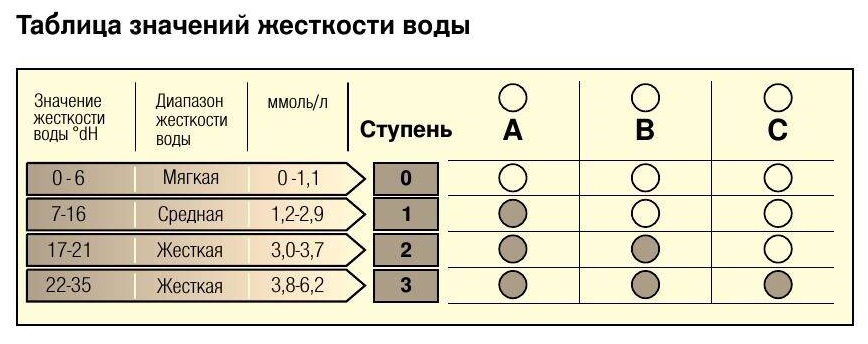
These strips need to be immersed in water for a few seconds, which will cause the color of the strip to change. The color that appears on the tester must be compared with the table in the instructions for the test strips to determine the quality of the water supply in your locality. The higher the hardness, the higher the salt consumption should be set so that hard water does not damage the ion exchanger, which is responsible for softening the liquid in the machine.
If the test strips were not included in the kit, then you can either buy them yourself, or find out the water data on the official website of the local water utility.
Set the required position of the knob responsible for salt consumption and proceed to the next point.
What are we going to wash the dishes with?
Bosch appliances are capable of washing dishes using all currently existing detergents. This list includes:
- pills;
- powders;
- gels.
The only requirement that cannot be violated is to use only household chemicals created exclusively for dishwashers. Therefore, do not even think about using the regular detergents that you bought for hand washing dishes before purchasing PMM. When it comes to household chemicals for dishwashers, housewives always have plenty to choose from.There are three groups of detergents on the market, divided by composition:
- chemistry with chlorine and phosphates;
- products with phosphates, but without chlorine-containing elements;
- products are both chlorine-free and phosphate-free.
Each user must choose the product himself, because the washing result depends on it. Chemicals without chlorine will not be able to bleach dishes, so if you need to wash dishes frequently after tea or coffee, it is better to buy products containing chlorine.
If you purchase products without phosphates, you should expect the formation of a white coating on the dishes, as well as on the walls of the washing chamber. To prevent this from happening, you must either use more household chemicals at a time, or change the product.
About using rinse aid
PMM owners often do not understand why, in addition to salt and detergent, they also need to add rinse aid. This product comes into effect at the last stage of the working cycle, during which it creates an invisible protective film on the dishes, prevents streaks, and also speeds up the drying process.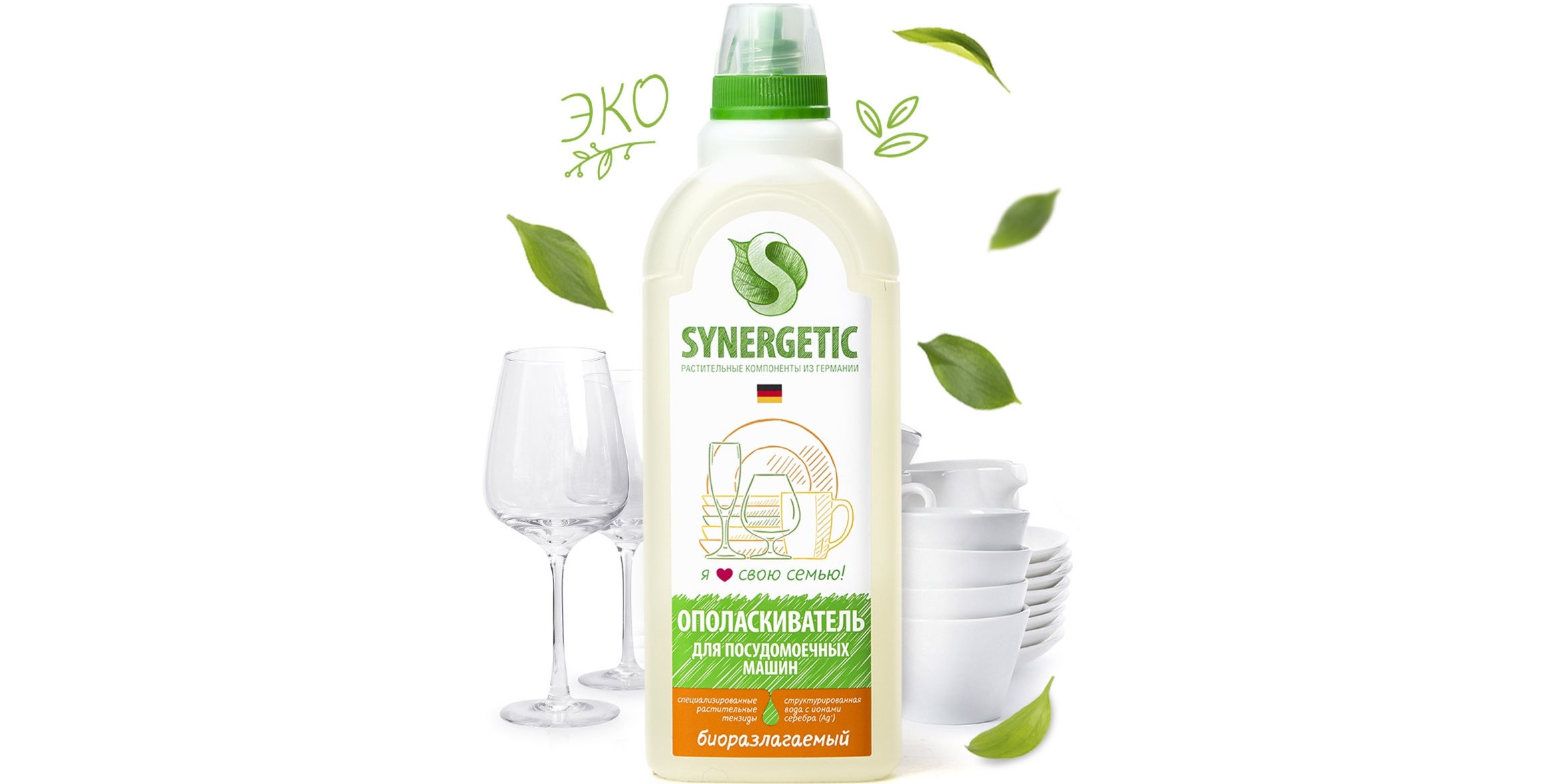
If you wash dishes without rinse aid, then all the glass and crystal dishes will have unsightly smudges after finishing the job, and the cutlery will be left without a pleasant shine. Therefore, you should not skimp on the rinse aid, especially since it is relatively inexpensive.
This chemical should be placed in a separate tank located next to the detergent compartment. For the first time, you need to start the wash with the manufacturer’s original settings and check whether a white residue remains on the dishes. If you are not satisfied with the washing result, simply increase the dose of rinse aid. If, instead of a coating, rainbow stains remain on the dishes, and the appliances themselves have become a little sticky, then the consumption of household chemicals needs to be reduced.
Putting away dirty dishes
The quality of washing dishes directly depends on whether they are placed correctly inside the washing chamber. That’s why it’s so important to spend as much time as possible on the arrangement so that everything is in its place.
This is also due to the fact that special sprayers are installed inside the device, which must move freely throughout the washing chamber so that water gets on all dirty dishes. In addition to the sprayers that ensure water circulation in the system, it is prohibited to block the detergent dispenser with dishes, otherwise household chemicals simply will not be used during washing.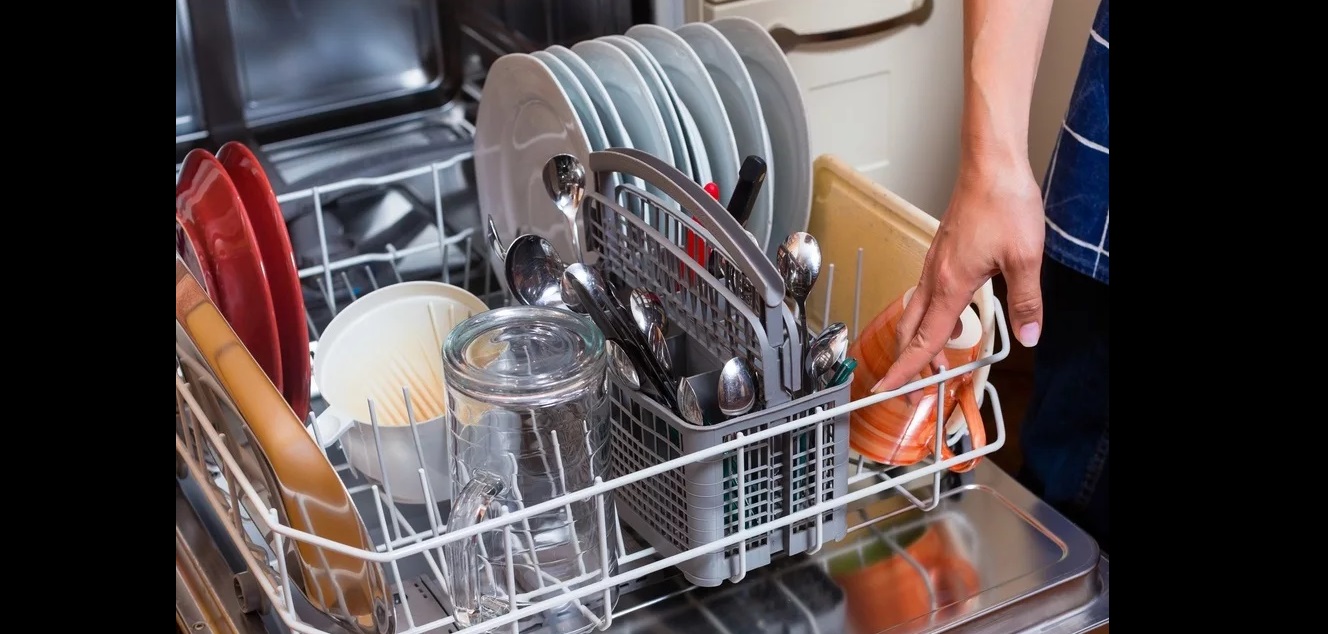
These are the most basic rules for arranging dishes. In addition to arranging, make sure that you are only going to wash dishes that will not be damaged by washing inside the dishwasher. The following items should not be washed in a PMM due to the fact that they do not tolerate prolonged contact with liquid:
- utensils made of wood or cast iron;
- products made of plastic that cannot withstand high temperatures;
- devices with mother-of-pearl handles;
- objects made of copper, aluminum or bronze.
Also, do not load dishes that have pieces of food, fruit pits, tea bags, napkins and other debris on them.
Depending on the model of the “home assistant”, it may have an additional soaking mode, which will allow you to pre-treat pots, pans and baking sheets. If your household appliances do not have such a function, you will have to manually clean the utensils from grease and burnt food with a special brush. Another way to improve the quality of washing is to pre-rinse the dishes under a powerful stream of hot water in the sink. This will allow the stubborn grease to soak out, making it easier for the machine to wash dirty dishes.
Bosch units provide the user with two boxes for placing dishes - upper and lower. They are equipped with baskets, of which there are three types:
- Vario;
- Vario Flex;
- Vario Flex Plus.
Boxes differ in the number of mobile and folding elements. The main difference between the baskets is the additional protection for fragile tableware, which is available in the Vario Flex and Vario Flex Plus baskets. The number of baskets depends solely on the PMM model, so in some devices housewives have access to two baskets, and in some - three at once. The third basket is needed for cutlery and items of unusual sizes.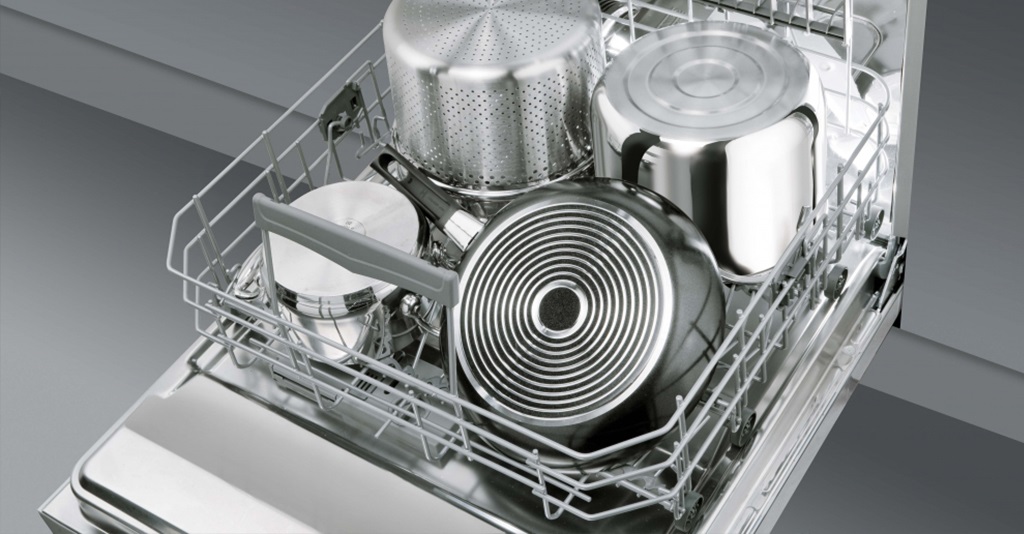
Bosch equipment also boasts a Rackmatic system, designed for convenient adjustment of the position of the boxes. This will allow you to place any items inside the machine, even the largest ones, that do not fit in dishwashers of other brands, and also conveniently secure wine glasses and glasses with special fasteners.
As for the rules for arranging dishes, they are detailed in the user manual. If you don’t have the factory instructions at hand, then an abbreviated version will help you.
- The upper box in the washing chamber is designed for: mugs, cups, glasses, gravy boats, small saucers, wine glasses, spatulas and other small items.
- The lower box is needed for: plates, pots, saucepans, baking sheets, frying pans, lids, as well as other large items.
Remember that all deep products must be installed upside down so that water does not linger inside, but flows down freely.Do not create a mountain of dishes, do not stack items on top of each other, and also make sure that there is at least a small gap between each table element so that the water washes the entire dish.
Select the program and launch the equipment
The last step is to sort out the washing modes. The classic set is considered to be the following:
- Auto;
- Fast;
- Delicate;
- Economical;
- Intensive;
- Pre-rinse.
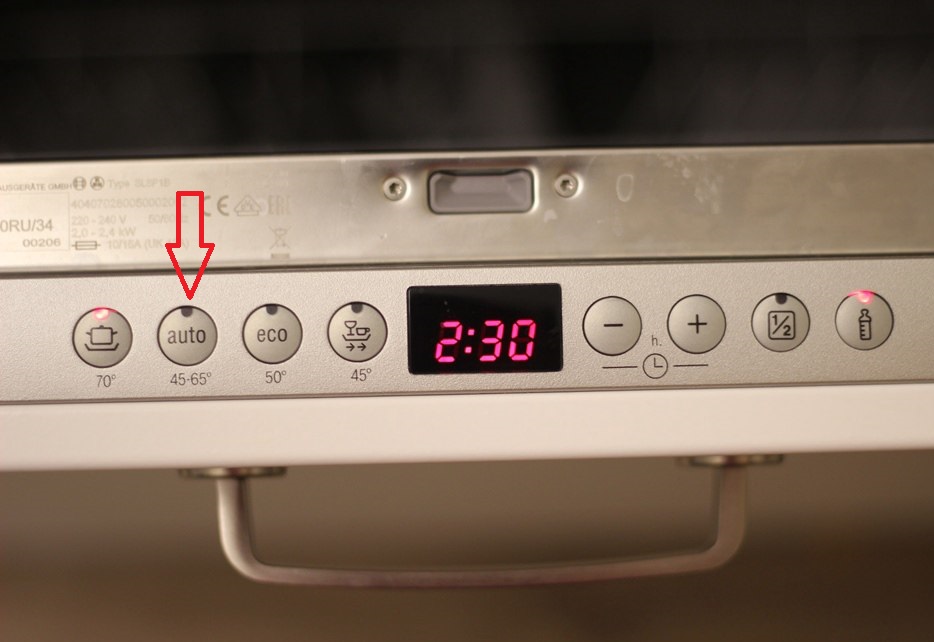
All of them are designed for different types of dishes, for different materials from which these dishes are made, plus, for different degrees of contamination of the utensils. Therefore, for each program you can additionally select the following parameters:
- water temperature;
- working hours;
- water consumption;
- type of detergent;
- mechanical impact method.
Now you know perfectly well how to set up a dishwasher, all that remains is to start a full working cycle. To do this, turn on the equipment, select the appropriate operating mode and the desired settings, press the “Start” button and close the washing chamber door.
Interesting:
Reader comments
- Share your opinion - leave a comment
Categories
Washing machine repair


For buyers

For users

Dishwasher




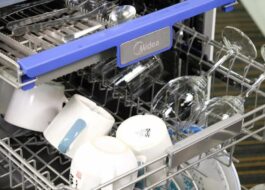












Add a comment